![Story of Commemorate Stone of Head of Myeon, Goyang Governor, Gyeonggi-do Governor]()
Story of Commemorate Stone of Head of Myeon, Goyang Governor, Gyeonggi-do Governor
There are 7 tombstones under the zelkova tree in front of Beokjegwanji, Goyang-dong, Deogyang-gu.
Mixed tombstones from different eras placed together is a rare site in the city of Goyang.
There are some where inscriptions have been worn off or cracked, but at closer look you can see the diverse government posts such as governor or head of myeon.
There is a commemorative tombstone for a good governor, Choi Chang-dae, who was the governor of Goyang at the time of King Sukjong. Its height is 128cm.
Next, there is a commemorative tombstone for a good scholar of Goyang-gun.
Built in 10th year of King Injo (1632) made with granite with dragon cravings, sized 110cm.
There is commemorative tombstone for a good government official for Hong Jin-yu. This tombstone was built in the 9th year of King Youngjo (1734) of marble and its size is 128cm.
Governor Hong Jin-yu worked as the governor of Goyang from 1730 to 1731.
There is commemorative tombstone for a good scholar for Jeong Jin-muk who a governor of Goyang-gun. Built in the 14th year of King Gojong (1877) of obi and its size is 145cm.
There is a co commemorative tombstone for Governor Yu Si-jeung of Goyang-gun built in 14th year of King Injo of obi material. Yu Si-jeung served as the governor of Goyang-gun in the 14th year of King Injo (1636).
There is memorial tombstone of Lee Jae-won, governor of Gyeonggi-do built in December of 14th year of King Gojong (1877) of obi materials of 145cm of height.
Lastly, there is commemorative tombstone for Shin Kyu-seon who worked as head of Beokje-myeon sized 115cm, built by the community leaders of Byeokje-myeon.
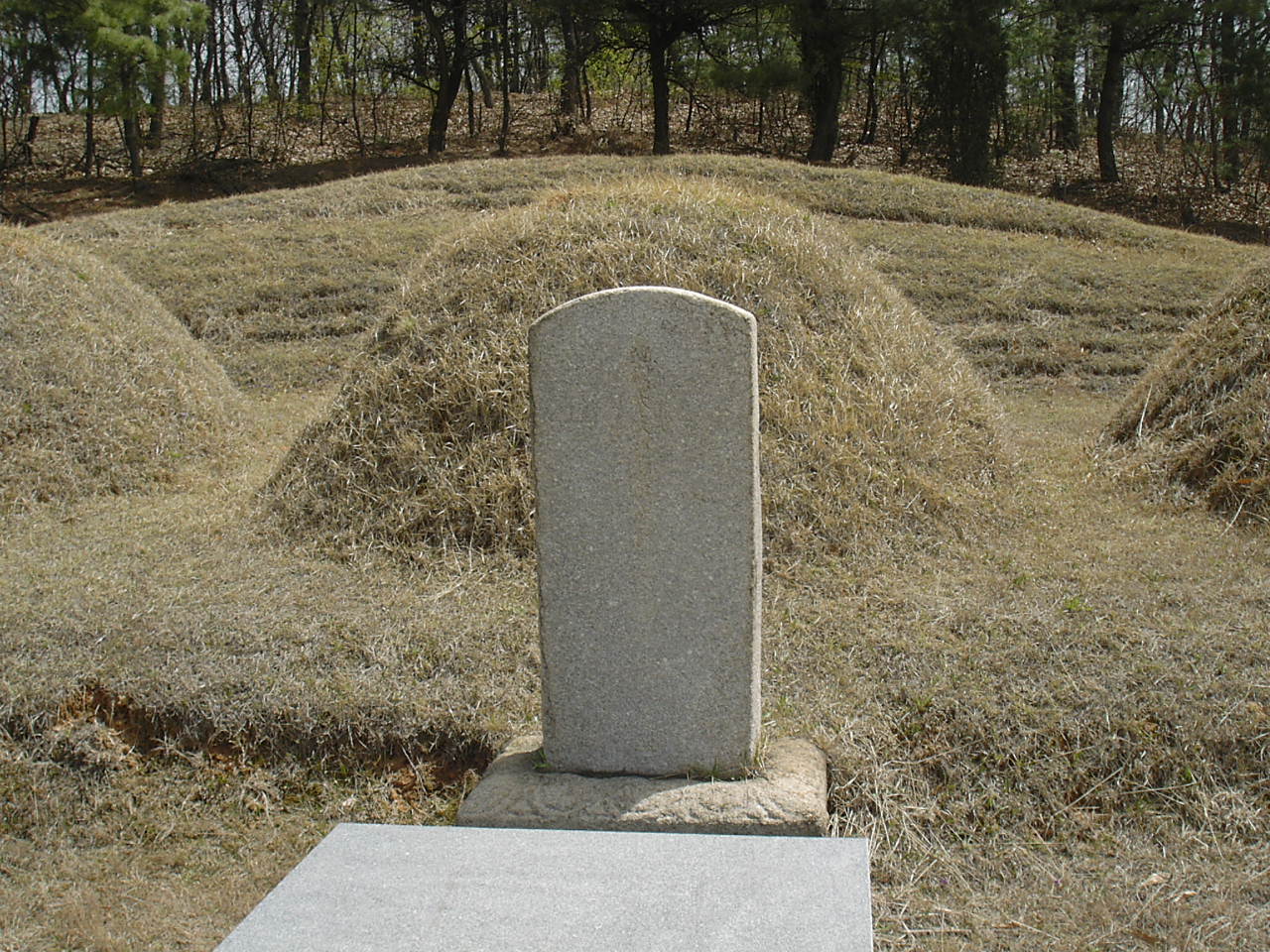
Story of Sir Haeng
Hyuncheon-dong Gamunae (Guhmunae) Village in the jusisdiction of Daedeok-dong, Deogyang-gu, Goyang has a long history.
The Min Family of Yeoheung have lived in Hyuncheon-dong Gamunae (Guhmunae) Village located northside of the Daedeog Mountain for hundreds of years.
This Hyuncheon-dong Gamunae (Guhmunae) Village is related to the Sir Haengchon Min Soon, the great scholar of mid-Joseon period.
Since early age, Sir Min Soon enjoyed studying and calligraphy, and townspeople all said that he would become a great scholar.
However, his family was so poor that they could not buy paper.
So Sir Min Soon would practice writing calligraphy or poems on the leaves in the mountains, and ink would flow into the stream, turning it black during the rainy seasons.
This place became Hyeoncheon, after black ink making up the stream.
With this reason, the nearby townspeople call this village gumennae and now it is called by guminae or gamunae.
The tomb and memorial stone of Sir Haengchone Min Soon of this Gamunae Village are designated as Goyang Regional Cultural Assets.
Sir Haengchon Min Soon was one of the Eight Great Scholars of Goyang enshrined at Munbongseowon Confucian Academy, the representative Confucian academy of the city of Goyang. He is a representative figure of this city.
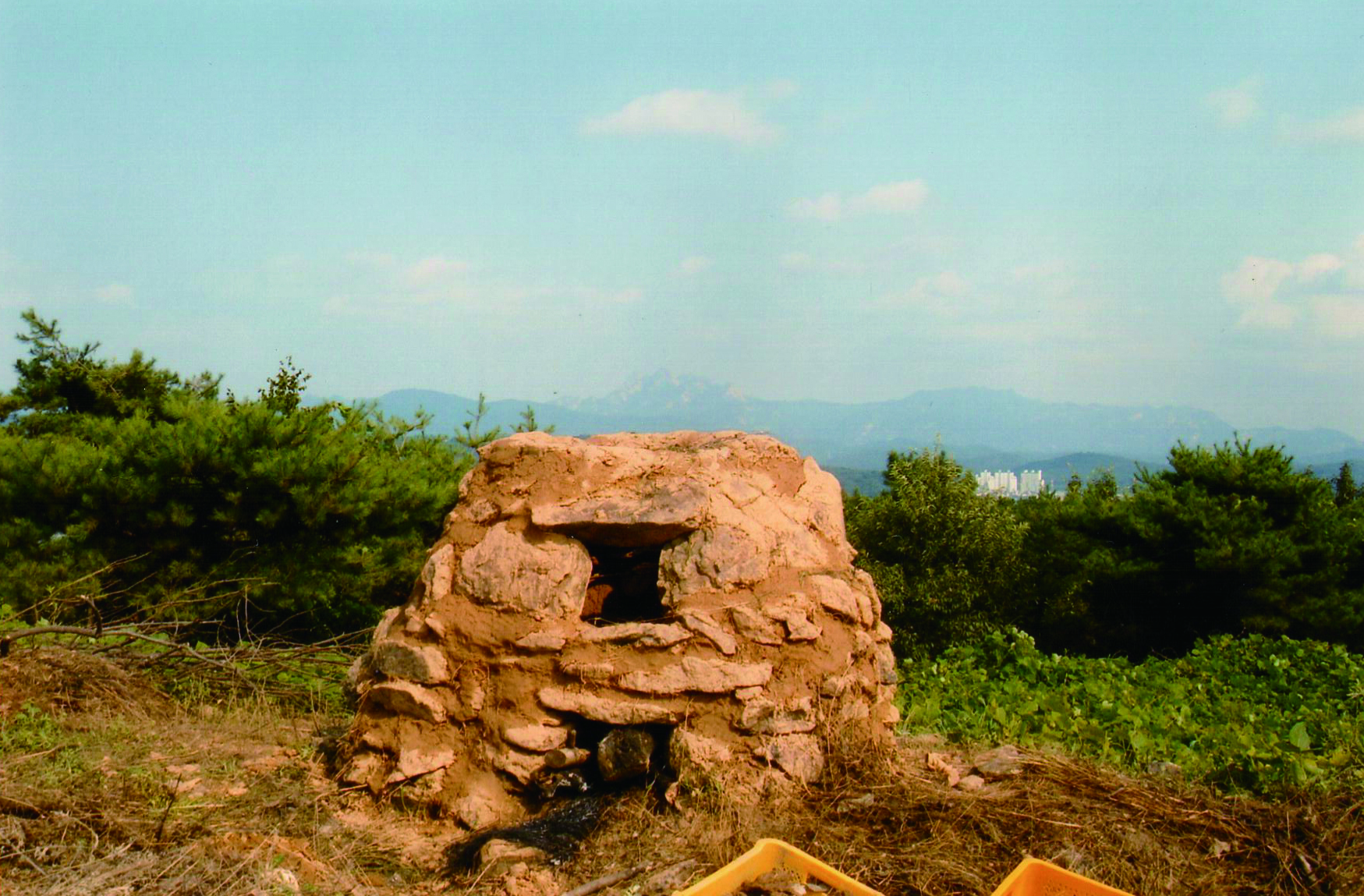
Fire Signal Story of Goyang’s Beacon Fire Station
According to old records, there were total of 5 beacon fire stations in the Goyang region. As Gwanjeodae-ro, Kyeongui-ro, Uiju-ro that connect China with Hanyang, Goyang region was important historically militarily, and geographically.
If the enemies of the north invaded or a battle broke out in the national border, the beacon fire station was the communication (signaling) system used to alert the central government where the King resided.
All the beacon fire stations in the Goyang region had the responsibility of receiving signals from Paju reion and passing onto Hangyang (Seoul).
The representative beacon fire station of Goyang region was the Gobong Beacon Fire Station located at the border of Jungsan-dong and Gobong-dong of Ilsan Dong-gu.
It is located at a strategic location where Han River and Uiju-ro can be view.
To the east of Gobong Beacon Fire Station is the Doksan (Munbong) Beacon Fire Station.
It was the beacon fire station that received from Hyeongje Beacon Fire Station of Paju and sends to Moak of Seoul.
Its original form is relatively well-preserved and is designated as a Gyeonggi-do Cultural Asset.
Next is the Bongdaesan Beacon Fire Station of Kangmae-dong. It is located behind the Maehwajeong Village of Kangmae-dong. There is a pavilion at the top. It was also called Haepo Beacon Fire Station and was at the strategic location of viewing the entire Han River from the mountaintop. It received signal from Gobong Beacon Fire Station in Ilsan region and sent signals to Moak (Ansan) of Seoul.
Lastly, the fourth beacon fire station was Bonghyun Beacon Fire Station located at the border of Yongdu-dong and Hyangdong-dong of Deogyang-gu and Kusan-dong, Eunpyeong-gu of Seoul. Today, the military resides at the Bongsan Beacon Fire Station remains, so the access to the general public is limited.
This is also a strategic location where Han River and land areas of Goyang can be viewed.

Sir Lee Ga-Soon, Independence Activist who overcame drought with Han River
At the time of the Japanese colonialism, Goyang soil was difficult to cultivate.
The area where Changneung and Kongneung rivers flow, such as Wondang, Byeokje, and Shindo overcame droughts relatively easily and were able to farm, but areas where Han River is blocked such as Jido, Ilsan, Songpo frequently spoiled harvest with drought and floods.
An independence activist, Sir Yanggok Lee Ga-Soon, who learned of the people challenge began irrigation report business with his son, Sir Lee Won-jae, who was running a hospital at Neunggok.
They brought in water of Han River and way irrigation system from Haengju to Ilsan and Songpo, so they anyone can farm easily.
Turning the reef field into rich soil enabled our region to be able to produce Ilsan Rice and Songpo Rice as regional products.
The Great irrigation business man of Goyang region, Sir Yanggok Lee Ga-Soon was an independence movement activist who was born in 1867 and died in 1943.
To commemorate the contributions of the father and son, the leaders of the Goyang region built a commemorative tombstone in April, 1950, which remainse today.
After the irrigation business grow, he donated his personal land to the nation and created the foundation for today’s Repair Association (Korea Rural Community Corporation) and Sir Lee Won-jae was selected as the first corporation leader.
Recently, the city of Goyang have accepted the suggestion of Association of Sir Lee Ga-Soon and designated the commemorative tombstone of Sir Lee Ga-Soon as a Goyang Regional Cultural Asset.
His descendants include the world- renowned musician sibilings, Myeong-hoon Jeong, Kyeonghwa Jeong, Myeonghwa Jeong. There are grandchildren from the maternal side.
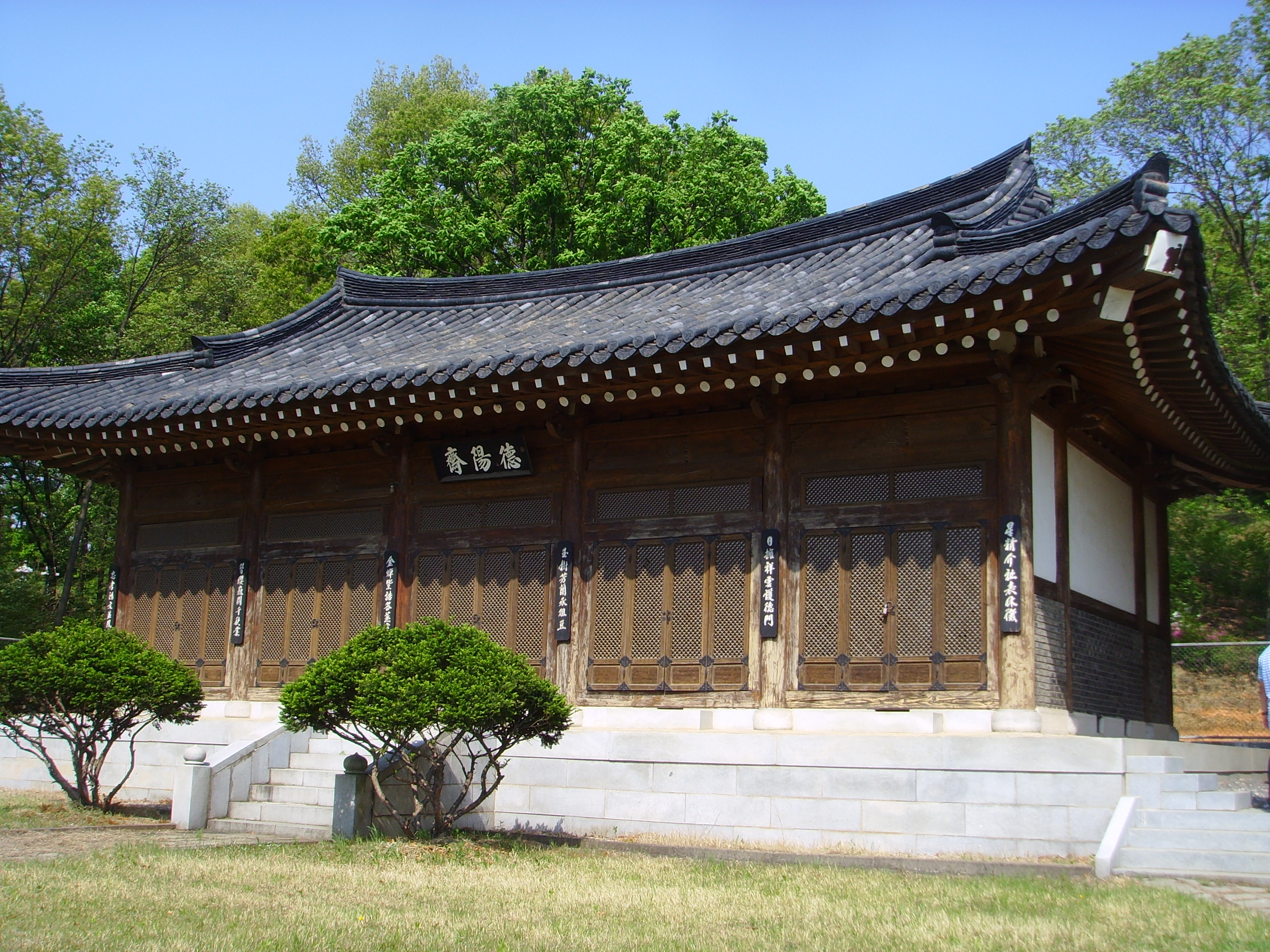
Family Ki of Haengju from city of Goyang
There are a few families that have originated from the city of Goyang.
The most renowned family is the Ki family of Haengju.
Remains related to the Ki family are spread around Goyang.
There are various shrines and Deogyangseowon Confucian Academy in Seongsa-dong including the birthplace memorial stone within the Haengju Mountain Fortress (Memorial Stone for Ki Family of Haengju).
All Ki Families of Korea have originated from Haengju.
Ki Family of Haengju have grown at the end of the Goryeo to beginning of Joseon.
It produced Ki Empress in the latter Goryeo era and government officials, scholars, and loyal servants glorified the family name.
Sir Bokjae Ki Joon, one of the Eight Great Scholars of Goyang, Ki Gun famous for clean governance, Ki Eungsae, Ki Jao, Ki Chul are renowned people of the Ki Family of Haengju.
Sir Gobong Ki Dae-seung, who represents Neo-Confucianism in the Honam region is a representative Fi member who have moved south from Goyang to Jeolla-do area.
In Sageunjeoli Village of Seongsa 1-Dong, Doekyang-gu, Goyang has shrines, Deogyangseowon Confucian Academy, Jaesil, Gojiksa Temple, etc.
Behind the shrine, there are tombs of memorial stones of those who represent the Ki family such as Sir Ki Gun and Ki Joon.
Some of the tombs are designated as Goyang’s Regional Cultural Assets.
In front of the shrine, there is Seosamneung Nuri-gil and Wandang Station of Line 3 nearby, making the place more known to the public.

Daeseomun of Bukhan Mountain Fortress, the biggest gate in Goyang
Where is the biggest gate in Goyang located?
A gate of10m height that allows people and cars to pass by freely was built in Goyang during the time of King Sukjong in the early Joseon period. The roof and the outlines have been well-preserved.
Castle gates are large in size, from gate tower, tile roof, to the ridge of the roof.
This gate is the gain gate of Bukhan Mountain Fortress, Daeseomun, that was built at the time of King Sukjong.
It is the oldest and the most extravagant gate of all gates in Bukhan Mountain Fortress, so many people walk through it.
Designated as a historical site, it is managed by the Cultural Asset Association and the city of Goyang. This Daeseomun is the gate that represents Bukhan Mountain Fortress.
It is the only gate that has devout prayers, among the 4 gates of Bukhan Mountain Fortress and 16 gates of castle gates.
Between the castle gate and gate tower, there is a female general on the square stone.
There are two heads of dragon with opened mouth below the female general.
These dragon heads are special statues only seen at Daeseomun.
In front, the dragons open their mouths to protect the castle and block evil spirits.
In contrast, there are 2 cute dragon heads at the center of the castle inside.
There are traces of the Korean War in various spots of the Daeseomun.
The wall that have cracked under bullets and bombardment show the old history of the castle gate.
The signboard of Daeseomun is the writing of the first president of Korean, President Rhee Syngman.
The name Daeseomun is remains clear but the seal and the name of the writer is erased in white.
This is because some tried to erase the traces of Presisdent Rhee when he resigned after 4.19 Incident.
Sitting on the gate tower of Daeseomun and feeling the wind that blows in the stream between UIsangbong Peak and Wonhyobong Peak is very cool and refreshing.
Under the fortress is the urbanized city of Goyang and parts of Seoul can be seen. Behind the fortress, main peaks of the Bukhan Mountain such as Wonhyobong Peak and Baegundae Peak rise up high.
There are no peaks between Daeseomun and Baegundae Peak. So when the day is clear, the Taegeuk flags and hikers on the peak can be seen.
Bukhan Mountain Fortress’ Daeseomun is most beautiful in spring when flowers are bloom and the sun is setting.
King Sukjong of Joseon Dynasty also visited the Bukhan Mountain Fortress through this gate. Now it is used as the main gate for the hikers, ordinary people who are tired from life.
Paris has the Arc of Triomphe, Seoul has Gwanghwamun, and Gowang has Bukhan Mountain Fortress as the gates that represent the city.
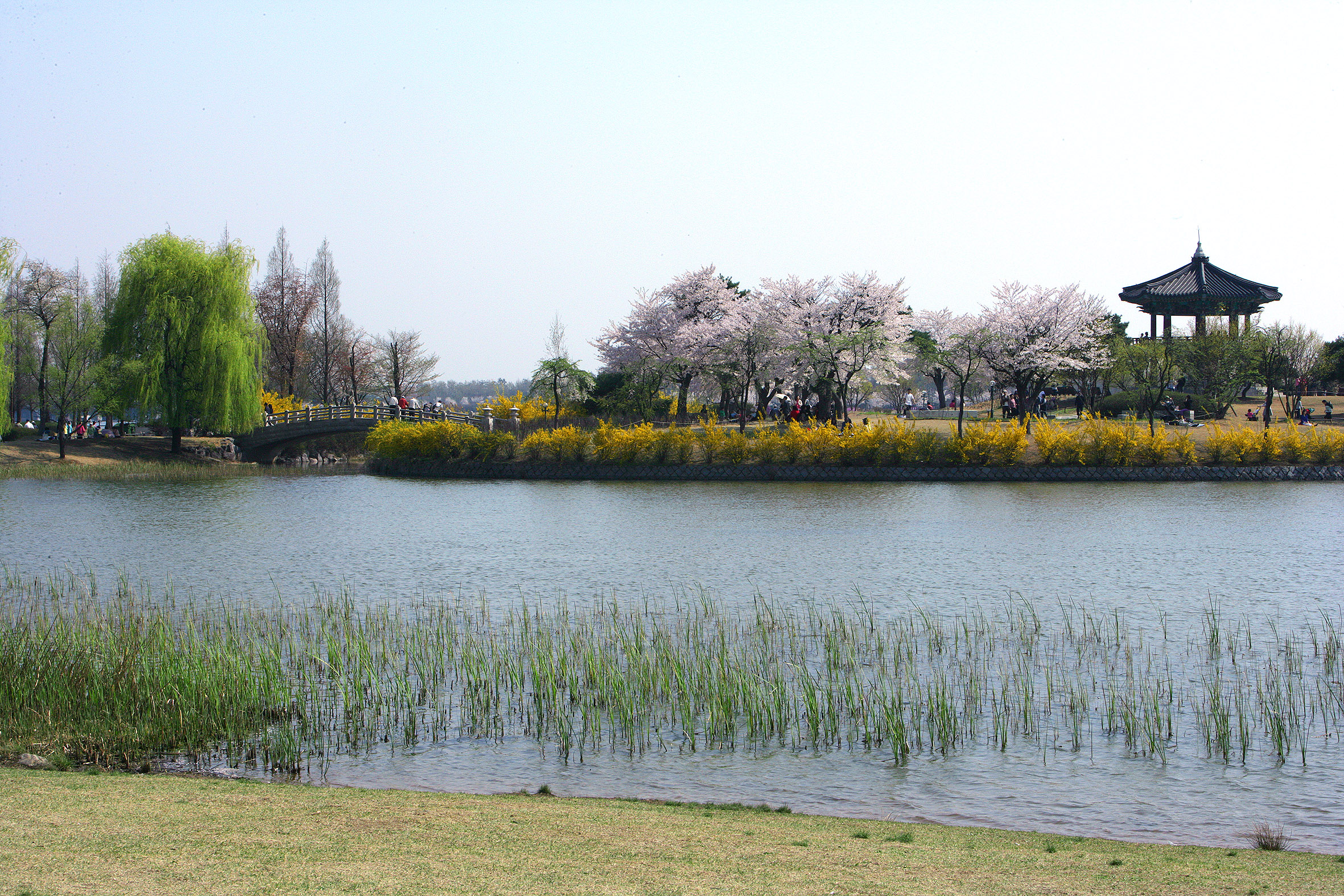
Story of Apdo Island of Lake Park at the time of King Yeongjo of Joseon
Goyang’s Ilsan Lake Pond is known by everyone in Korea.
Goyang’s biggest festival, Goyang International Expo is held here annually
It is the best attraction site where millions of people visit each year.
Now there are lake, park, trees, flower expo, paths, squares, exhibition of 600 years,
But it looked very different at the time of King Sukjong about 300 years ago.
Records about Joong-myeong (Current Ilsan area), Goyang-gun in the 31st year of King Yeongjo (1755) writes the following of the region.
Translated into Korean, there was an island called Apdo in where there is the lake park today.
There were a lot of ducks and birds on the island, so it was also called the Duck Island.
The dimensions of the island were recorded in details as 10,273 cheok.
The reeds of this island were so well-grown, like that was Nanjido of Seoul, that the country directly managed it.
The government office that managed this region was called Seongonggam and its official title was Chojang.
At the Seonggongam Chosen, Choran and Jeongran were grown and used by the government
Choran means untrimmed reed or common reed and Jeongran means trimmed reed.
All the leaves of the reeds were used the state.
At the time of King YoungKo of early Joseon period, the water of Han River rose to the foot of Jeongbal Mountain at times.
The surrounding areas were wasteland full of reed and marshes, impossible to farm.
It was a natural habitat similar to Janghang Wetland of today.
Reeds were used widely as straw thatch for roofs, rainwears,
Also as firewood and construction materials.
The reeds, special product of the region, were shipped to Mapo Port of Seoul using ships and used by the royalty and the court.
Today’s Lake Park is a development of a big island and the surroundings at the mouth of Han River.
With consistent irrigation works since the 1930s, it had become a large field in 1970s and 80s.
The rice grown here, called Ilsan Rice or Songpo Rice, became nationally famous.
Since the early 1990s, the Land Public Corporation began
Ilsan New City Development Project to change the village and fields into today’s city.
Before, the Goyang Ilsan Lake Park used to be a big reed island.
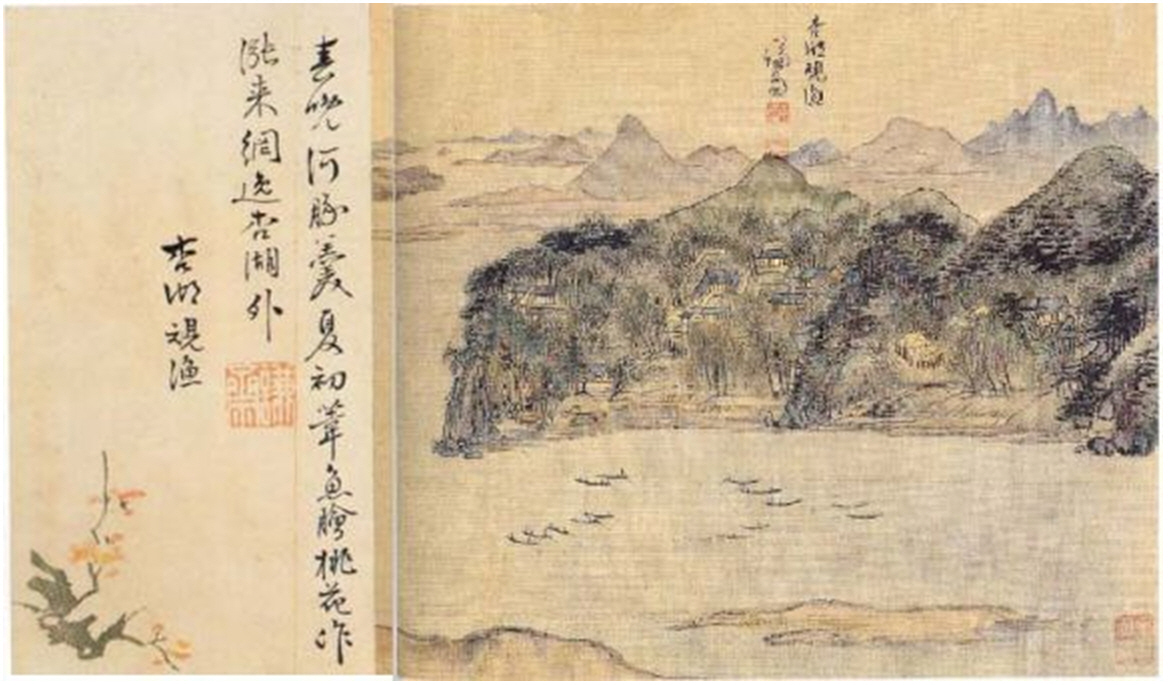
Story of Haenghogwanuhdo, painting of old Goyang by Sir Gyeomjae Jeongseon
Chosun Dynasty Painter Gyeomjae Jeongseon of the time of King Youngjo and King Jeongjo painted Goyang area and Han river in the spring of 1741.
The name of the painting is Haenghogwanuhdo, one of his greatest works.
In 1741, Gyeongjae Jeongseon went to Neungseon of Gaehwa Mountion the new governor of Yangcheon, beyond Han River.
And looking over the famous Haengju and Han River, he painted.
Small boat catching anchovy, willow trees, mountains and stresams of Goyang, many houses of tile-roof and thatched roof of Gooyang are depicted. At a closer look, one can see that the shape of the scenery such as mountains of Gyeondal, Deogyang, and Gamak are very much like the real ones.
With this single painting, Goyang Haengju Mountain Fortress Historical Park was built on the place where Goyang’s barbed-wires were removed. Now it’s a place where many people visit.
In one side, anchovy boat was restored. The best regional product of Haengju Mountain is anchovies. Anchovies were goods donated to the king that represented Goyang, and the anchovies caught under the Haengju Mountain Fortress was of the best quality, so good that a temporary office called wui-uh(anchovy) was built.
Having recently climbed the Gaehwa Mountain and seeing the city of Goyang where Sir Gyeomjae painting the city, astonished me with all the tall buildings.






